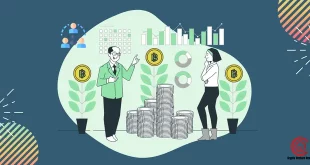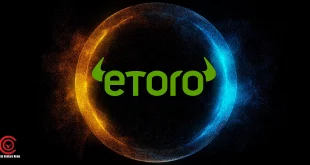NFT tokens are the hottest trend in the past few months. With the formulation of Bitcoin in 2009, the creator would have not guessed that the world would purchase digital collectible Crypto Kitties, Hashmasks, Punks, celebrity music, and so on. However, all of the above-mentioned commodities made use of a completely new Ethereum standard for evaluating unique assets on its blockchain network, the ERC 721 which is popular as the solution for the construction and transfer of NFT (Non Fungible Tokens).
What Is A Non Fungible Token?
You may wonder what NFT means. NFT can be defined as a cryptographic token that uniquely describes an asset. It can portray both digital assets like images but along with that, it can also track real world assets like a car or a house. As assets can be defined uniquely this implies that you can also prove authority over said assets and lastly prove their authenticity.
Now you might wonder about the need for NFT tokens in uniquely identifying assets. The issue with the regular token that is formulated using the ERC-20 standard is that they can be divided and can also be interchanged.
Features Of NFT Tokens
So by this time, we hope you are clear with the idea of non-fungible tokens, so let us have a look at the characteristics of NFTs.
Uniqueness
We have already seen the crucial aspect of uniqueness. NFT tokens enable you to define an asset uniquely by offering metadata that defines the assets and makes them unique from other assets.
For instance, a project like Decentraland sells digital pieces of land. To uniquely evaluate each piece of land, the metadata comprises virtual coordinates and the features of the land like what building it offers, or the area of land that is covered by grass.
Rarity
A rarity that is also termed as scarcity is an aspect that makes NFT famous. With an ERC20, the coin developers can set the limit of the token freely. So if you want a supply of 100,000 tokens you can get that. And even after that if you want more tokens you can increase the total supply inside your smart contract. That’s it.
It is not possible to formulate infinite assets with NFTs. Rarity ensures that you can only use each asset once on your blockchain. Once you do so, others will be restricted to register with the same asset a second time which makes the asset rare. In other terms, rarity offers value to NFTs as long as people are willing to spend money on them.
Indivisibility
Lastly, NFTs cannot be split. For instance, you can own a complete Bitcoin. However, if you do not have the money that is required for buying one complete Bitcoin, you can split the Bitcoin denominations that are smaller and purchase 1/10 of a Bitcoin. These small denominations of Bitcoin are known as Satoshis.
How Do Non-Fungible Tokens Operate?
As stated before, the ERC-721 standard was introduced by Ethereum that enables developers to evaluate unique assets. On 24 January 2018, it was finalized and the functions for Ethereum contracts were defined to operate with it. However, the ERC721 metadata contract is much more exciting for the users as this is the place where the real magic happens.
Both a symbol and a name can be provided by the users to the NFTs that they wish to define. Along with that, the user will have to offer a URI that aims at a JSON file that defines the unique characteristics of an NFT. A JSON file is another type of data notation where the properties such as name, image URL, and description can be tracked.
Requirements For Non-Fungible Tokens (NFT Tokens)
NFTs work great for digital economies. The gaming industry for instance is home to several micro-economies. Just look at the games like CS: GO, Fortnite: The Battle Royale, or League of Legends. Each of these games has an economy of in-game assets which the players can trade. They often get in-game assets for winning any particular game.
Along with that the decentralized movement of identity also gets help from NFTs as the physical properties can be linked like your car or house to the decentralized identity that you hold, becoming a true of ownership where the user can transfer assets without any hesitation in a global market.
Here is a list of possible representations for NFTs:
- Collectibles
- Art: both digital and physical
- In-game items, like skins or stickers
- Items in a digital world, such as a piece of land
- Real-world assets, like houses or cars
- Identity-related properties, such as medical history or certifications.
Conclusion
In the end, the value of the NFT tokens depends on the amount of money one is willing to pay for it, which is similar to any collectible item. The value is not inherent to the product itself but is rather defined by people who decide its value. It is also exciting to know that there are some NFTs that have burst in value. Lastly, NFTs have received a lot of exposure and popularity over the past few years as they operate as a proof of authenticity and ownership of both physical and digital items.
Frequently Asked Questions On NFT Tokens
1. What are NFT coins?
NFT can be defined as a cryptographic token that uniquely describes an asset. It can portray both digital assets like images but along with that, it can also track real world assets like a car or a house.
2. What are the best NFT tokens?
The top NFT tokens list include:
DeFi Coins (DEFC)
Theta (THETA)
Chiliz (CHZ)
Decentraland (MANA)
Tezos (XTZ)
3. Which are the NFT tokens?
The value of the NFT tokens depends on the amount of money one is willing to pay for it, which is similar to any collectible item. The value is not inherent to the product itself but is rather defined by people who decide its value.
4. What is the most popular NFT?
The most popular NFT token is DeFi Coins (DEFC) and Theta (THETA).
- The Bitcoin Wallet Boom: Why Demand Is Skyrocketing - 25/11/2023
- How To Choose The Best Crypto Exchange Affiliate Programs - 03/03/2023
- Crypto License: How To Get It Now? - 03/02/2023
 Crypto Venture News One stop Crypto Track Down
Crypto Venture News One stop Crypto Track Down 






